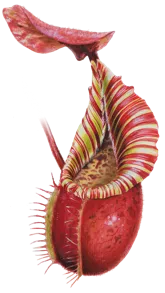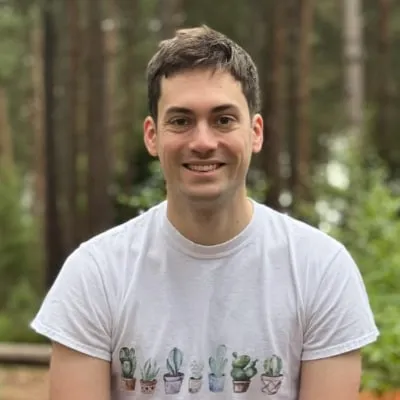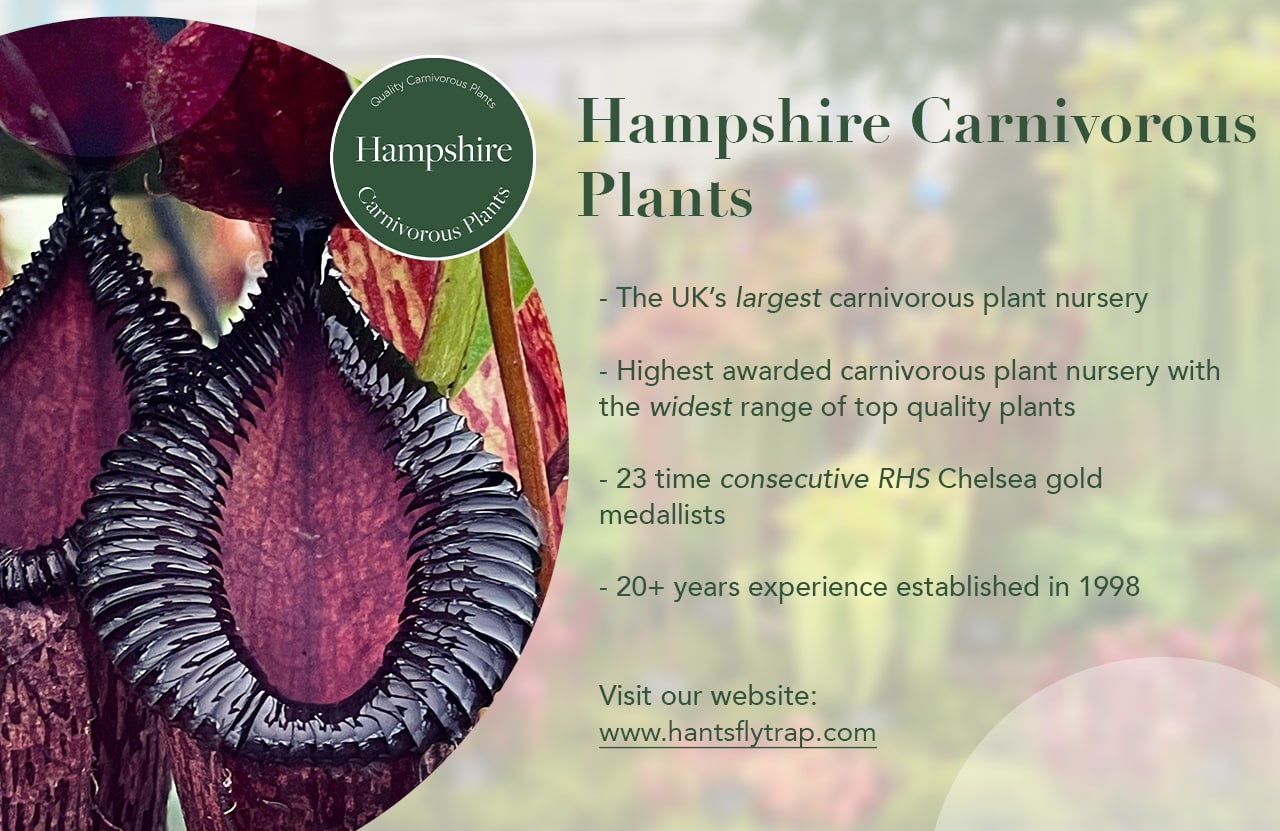Nepenthes hamata x edwardsiana
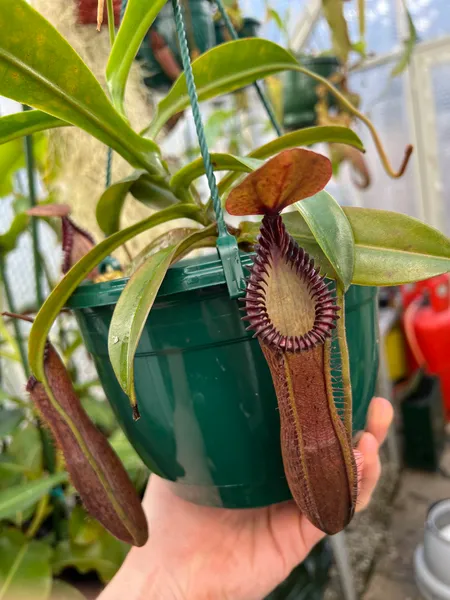 A magnificent hybrid!
A magnificent hybrid! 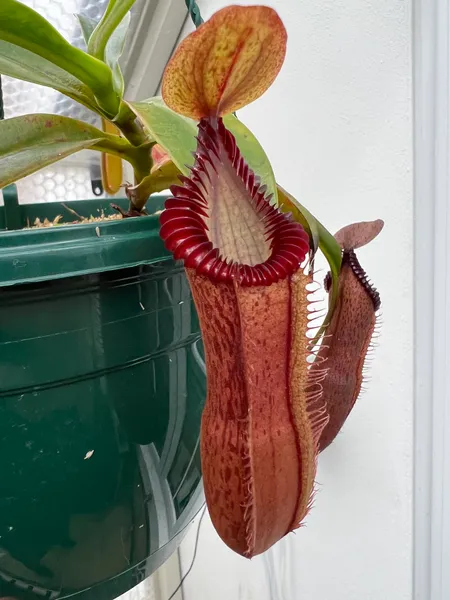 Freshly opened pitcher on N. hamata x edwardsiana, from seed
Freshly opened pitcher on N. hamata x edwardsiana, from seed 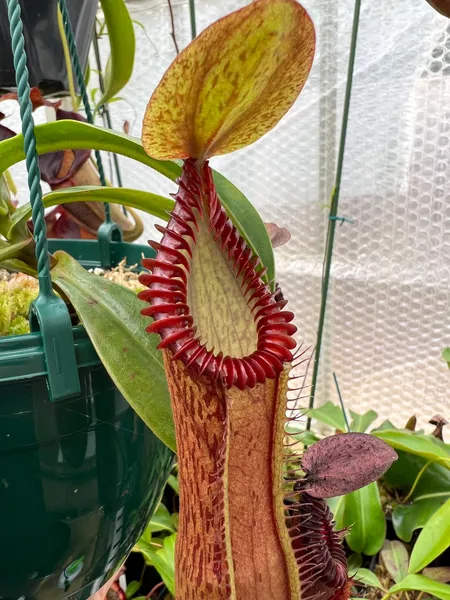 Freshly popped pitcher with a nice red peristome
Freshly popped pitcher with a nice red peristome 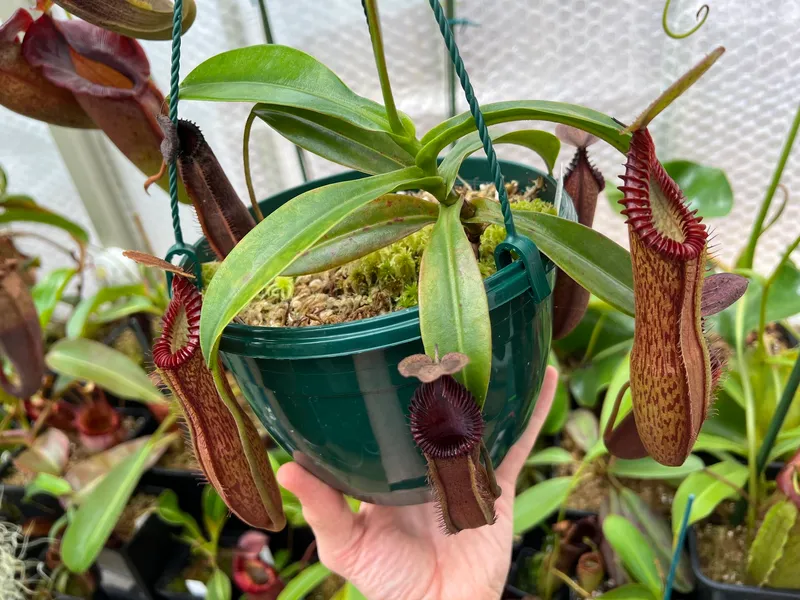 Mine grows happily in a hanging basket year-round
Mine grows happily in a hanging basket year-round 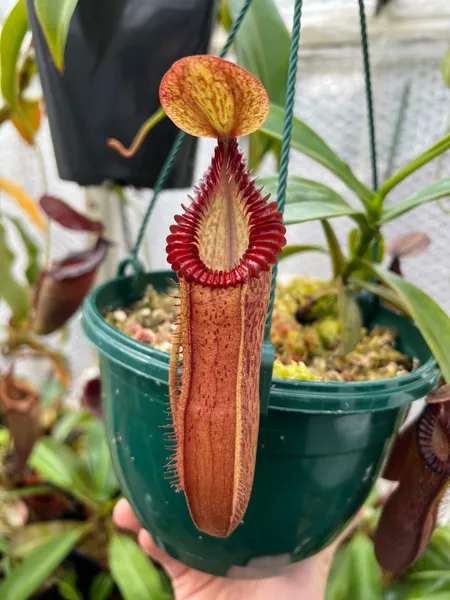 No caption necessary
No caption necessary 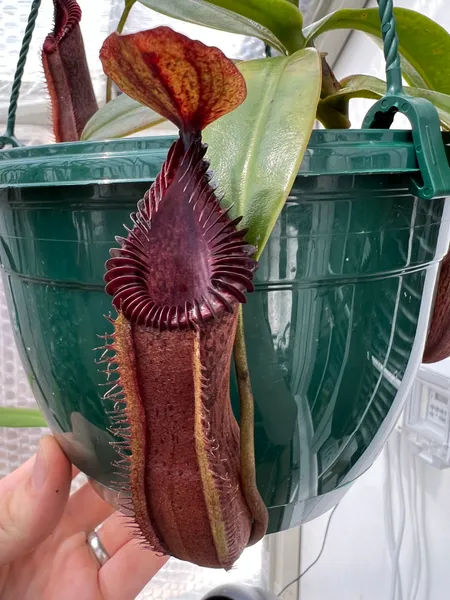 The peristome darkens to deep purple as it ages
The peristome darkens to deep purple as it ages Description & Care
In my opinion, this is one of the best hybrids ever made!
Nepenthes hamata x edwardsiana was first created by Andreas Wistuba sometime around 2017, and since then it has been recreated several times by other nurseries. Despite being in tissue culture, it always sells out immediately, and it’s easy to see why.
This cross combines the best features of its two parent species. It has a magnificently toothy peristome and an elongated red pitcher body which darkens to a purplish-brown. The leaves are quite robust, and the pitcher size is large relative to the leaf size (a trait comferred by the female parent).
I’ve found this plant to be an easier grower than either parent species, though it does seem particularly succeptible to pests, much like N. hamata. It benefits from strong fertiliser in the pitchers, and doesn’t like its growing media to get too wet (much like N. edwardsiana). Other than that, it’s an easy and fast grower in intermediate-to-highland conditions.
Highly recommended, if you can get your hands on one.
How I Grow It
| Media | Long fibre sphagnum moss, perlite, and - optionally - orchid bark (2:1:1). |
| Water | Damp but not wet. |
| Light | Very bright, diffused light. |
| Fertiliser | Maxsea or liquid orchid feed in the pitchers, every two weeks. |
| Temperatures | 12°C (54°F) minimum year-round, with summer highs of ~ 30°C (86°F). |
| Humidity | 70% during the day, rising to over 90% at night. |
Learn more about cultivation with my guide to growing Nepenthes.
Day & Night Temperatures
The female parent - Nepenthes hamata - is a highland species found at elevations of between 1400 and 2500 meters. The male parent - Nepenthes edwardsiana - is a highland species found at elevations of between 1600 and 2700 meters.
On average, the hybrid N. hamata x edwardsiana is likely to grow best with temperatures of approximately 19 - 28°C during the day, and 9 - 18°C at night. This range is highlighted in purple above. For further guidance on the cultivation requirements of hybrids, try out my Nepenthes Interactive Guide .
Buying N. hamata x edwardsiana
| Availability | Expensive and hard-to-find. It's in tissue culture in Germany, but always sells out immediately. |
| Borneo Exotics codes |
|
| Recommended nursery | California Carnivores Hampshire Carnivorous Plants |
See Also
I've written profiles of these related hybrids:
